I was among the first people to enter the crypto market in China. Very few people can really make money in the crypto market and keep it.
There is no luck in surviving in the cryptocurrency world
Many people disdain to say that those who have experienced several cycles in the crypto world and made a lot of money are gamblers and have good luck. Let me tell you a truth, don't be jealous, there is no fluke for those who can obtain great wealth in the crypto world and keep it. Don't be unconvinced.
I won't talk about how many pitfalls there were in ancient times, which were 100% more thrilling than now. Just say now, those who have made a lot of money and held onto it, their actions towards their large positions must perfectly avoid all of the following:
1. Open a contract
2. Bought a lot of non-Bitcoin
3. Put all the coins in the exchange
4. High-frequency trading, trying to buy low and sell high
Don't underestimate these 4 things. If you don't pay close attention to the crypto market, you won't understand. And those who can make a lot of money in the crypto market must pay close attention to the crypto market and have continuously traded in the crypto market - these people can maintain the above 4 principles after making a lot of money, which means that they must have suffered a lot in the above things. And after completing cognitive training, they can still raise a large amount of funds in the crypto market without the above gambling methods. Is it a fluke?
Most people in the crypto world have only 'made money once', because their way of making money is only through the above methods, and naturally they will lose because of the above methods. And after a person understands that the above methods cannot really lead to wealth, they cannot find other ways to get rich in the crypto world, and that is the problem.
Let me tell you that those who have really made money in the crypto world and kept it for a long time, in addition to not stepping on the above pits, must also meet at least one of the following conditions:
1. Have a flagship product in the crypto world
No matter how much you know, you will step on the above pits and lose the coins you should lose. But the point is that you have a product that continuously makes money in the crypto world. The role of this product is that no matter how many pits you step on in the crypto world, because it receives coins, you will always make up for the lost coins. And as you slowly become smarter, you no longer step on those pits, so you have more and more coins - representative figures are cz, Sun Ge, etc. They have all stepped on these newbie pits, but the key is that they have a product to help them continuously earn back coins, but you don't, and that is the key.
2. Have the ability to continuously invest at regular intervals
If you don't have the ability to make products, then this is the easiest one for you to match. Don't say 'Bitcoin won't increase by many times anymore', this is not a reason for you to gamble with a large position - when has Bitcoin ever been faster? In the past, Bitcoin was low, but that was compared to now. In those days, Bitcoin grew slower than altcoins. As a result, where are those altcoins now? Give yourself 10 years, and keep putting in the money you earn in the next 10 years slowly, so that the money you earn in these 10 years can be multiplied by 5 or 10. This is the best way for ordinary people to enter the crypto world.
The premise here is that there is a good locking mechanism that only allows entry and no exit; a good fixed investment environment, not that you invest when you have money today, and you don't invest when you don't have money, and you invest heavily when you think it is very low, and you don't invest when you think it is too high; you also need an excellent off-site deposit ability - the stronger your earning ability, the more the above rules will add to you.
The above prerequisites are indispensable. A person who has the ability to manipulate things outside the market, and who can honestly and humbly listen and follow in the market - this is a very remarkable person, and this money is what you deserve.
3. Coins are locked up
I participated in an early fund where the coins were locked for 5 years. During this period, the crypto market experienced too many ups and downs, but the money was locked and could not be moved. Were there times when I needed money in real life? Of course, I bought a house during this time, and when the investment repayment did not come back and I wanted to invest in other projects, I also briefly turned to the bank for turnover. Later, the coins in my hands became less and less in the ups and downs of investment and entrepreneurship, but when the fund distributed money, I found that adding up several shares, I still got hundreds of Bitcoins - although the fund still did not outperform hoarding coins directly at that time, the problem is that it really couldn't be hoarded. The percentage of coin loss in this fund is much smaller than the part I hold myself.
In the crypto world, there are many such things. A certain loser bought coins and went to jail for hitting someone. After coming out, he was worth over 100 million - this is not a story, it is reality, and if he hadn't gone to jail, these coins would have been all gone.
Since then, I have actively locked up the largest share of Bitcoin and have been locking it up until now. If you believe in Bitcoin, now switch all your savings to buy Bitcoin, actively lock it up for 10 years, and then start from scratch. Look at it again in 10 years, and the result is likely to exceed all the other seemingly more useful things you have done in these 10 years.
Let me say it again, I have never seen any big player become a big player by trading coins. Not a single one - trading coins cannot make you a big player, and leverage cannot make you a big player. There is no fluke in the crypto world. Your understanding of it must be in place first, then it can become your best tool for getting rich, otherwise you will become its slave instead.
After more than 10 years of trading coins and experiencing 4 bull and bear markets, I can say that truly maintaining wealth, being a firm believer in Bitcoin, and hoarding Bitcoin firmly will naturally bring wealth closer to you!
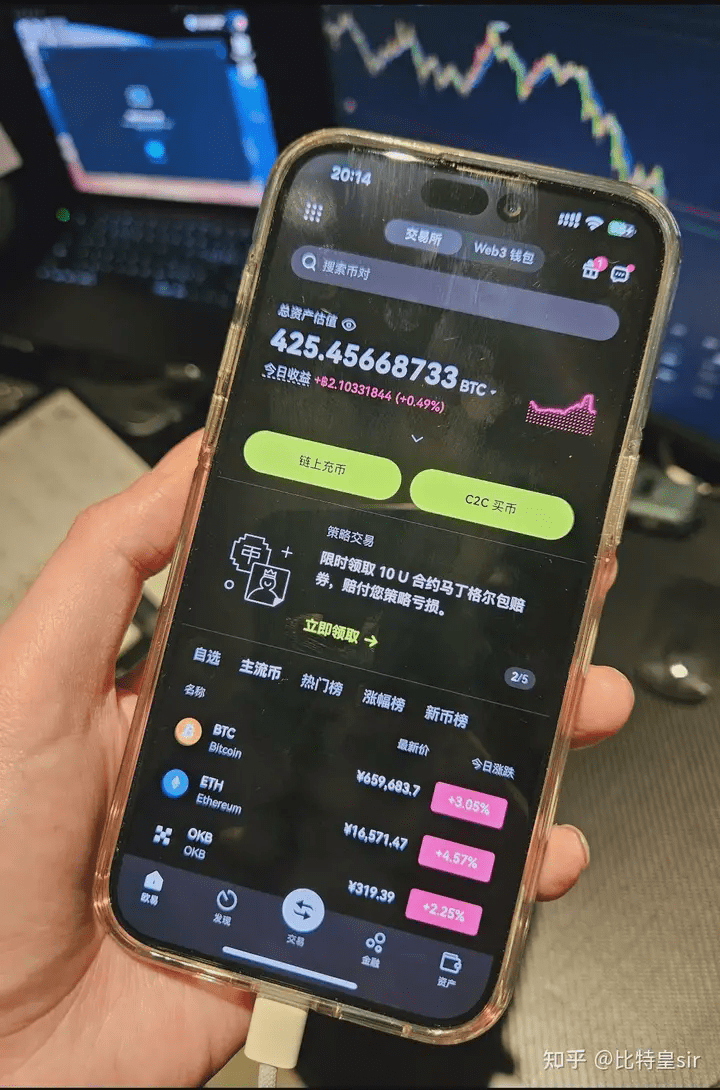
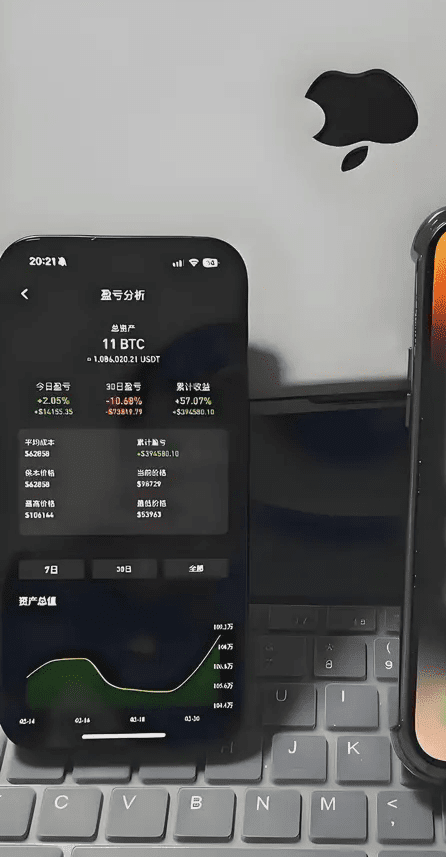
There are currently three types of people who make money in the crypto world
The first type treats coins as assets, honestly hoards some, and doesn't ask or care about them, not even during a bull market. They just treat their coins as an asset, and don't buy much. Maybe they earn 120,000 a year, save 30,000 by saving money and spending less, and buy in. They have a good mentality and buy coins like Bitcoin. They don't care about the various good and bad news in the crypto market, and they don't want to care. They know that caring more does not equal getting more, and this kind of caring is ineffective. After two rounds of bull and bear markets, they hoard a little money every year, and as a result, their assets become tens of millions. This is a road that ordinary people can take, but it is really not easy to do. This kind of person knows deeply what they don't know, so they never do anything. They adhere to their circle of competence and pursue a universally applicable path to success.
The second type really relies on luck. They listen to news in the market, make various friends, and have various hot sectors and events. Sometimes they lose, sometimes they earn, but when the bull market comes, they may buy a target and suddenly earn tens of millions. I have seen this kind of person around me. Some can leave the market in time and exchange the coins for real assets and keep most of them, while others eventually give everything back to the crypto world. They want to earn other people's money and have not thought about contributing to the crypto world. They just want to make a quick buck in the crypto world. When the market is full of rain and dew, it overflows a little to give them some good fortune. That's okay. If the market is dry, their assets will be taken away by the market with both principal and interest. This is the luck in the market cycle. I have also earned lucky money, and I also know that it is very important to know what you know. Leave in time and exchange the earned money for assets that can take the bright road. However, this is very, very difficult to do. What anyone says is useless. People teach people, they can't teach. Things teach people, and they will learn it once.
The third type relies on strength and personality to make a living. The crypto world is their ATM. They can make projects, issue coins, and harvest, and they can also be market makers and follow the trend to make a lot of money. They play everything, and trading is the theme. They mainly do U-denominated trading. They are satisfied by watching their U grow. They don't trust an asset to be held for a long time. Only when U becomes more is it considered earning. This type of person can make money in both bull and bear markets. Of course, if they encounter loss-making projects, they can leave immediately. This is what distinguishes them from other novices. When they see profitable projects, they don't just leave after earning a little, but also know that the logic of the rise has not ended. They don't look at the price and don't say that a certain coin is too high and they want to leave. It is too high and may fall. They don't have this idea. They only have logic in their hearts. When the logic ends, they leave. Their own subjective prejudices and the developing market can be consistent. This type of person is very powerful. This is the realm of the heavy sword without edge, and the result is to become a big money maker.
So which one do you want to be? The third type is the most difficult to achieve. You have to put in a lot of effort and add your own personality, emotions, and cryptocurrency worldview to achieve it. The second type depends on God's reward, no matter how difficult or easy, it is all destined. The first type is the simplest, but many people don't believe that making money can be so simple, so this has become the road with the least competition, and also the simplest.
The first type never argues with others. The second type relies on luck to compete with others, and the third type relies on strength to compete with others. Since it is competition, there will be winners and losers.
I am Instructor Huang, I have experienced multiple rounds of bull and bear markets, and I have rich market experience in multiple financial fields. Follow the official account (Crypto Huang Instructor). Here, penetrate the fog of information and discover the real market. Grasp more opportunities for wealth passwords and discover real valuable opportunities. Don't miss out and regret it!
I was among the first people to enter the crypto market in China. Very few people can really make money in the crypto market and keep it.
Share with everyone, remember to bookmark!
Do you want to find high-probability trading opportunities?
Do you want to develop your own high-probability trading strategy?
I believe you must want to, otherwise you wouldn't have clicked on this article to read it.
But the problem is... you're not sure how to do it.
You are not paying attention to the price, but are looking at indicators (without understanding their purpose).
You are not following the trend, but are trying to predict a market reversal.
You are not performing proper risk management, but instead placing a large bet because the trade 'feels good'.
Now... if you're doing any of the above, it will be difficult to identify high-probability trading opportunities.
But don’t worry.
I have good news for you.
Because in this article, I will teach you step-by-step how to find high-probability trading opportunities.
Here's what you'll learn:
✅ Why Trading with the Trend Increases Your Returns and Reduces Risk
✅ How to Find the Best Trading Areas on Your Chart
✅ How to Trade the Pullback, Breakout, and Failed Test Patterns
✅ How to Set Reasonable Stop-Losses to Avoid Being Stopped Out "Too Early"
✅ A high-probability trading strategy that allows you to profit in both bull and bear markets
Alright, so let’s get started…
Trends make you more efficient
A trend is defined as:
◎ Uptrend: Consists of higher highs and higher lows
◎ Downtrend: Consists of lower highs and lower lows
If you want to find the path of least resistance, look to the left (and follow the trend).
When the price is in an uptrend, you should stay long. When the price is in a downtrend, you should stay short.
By trading with the trend, you can see that the impulsive moves (green) are more favorable to you than the corrective moves (red).
Here are a few examples:

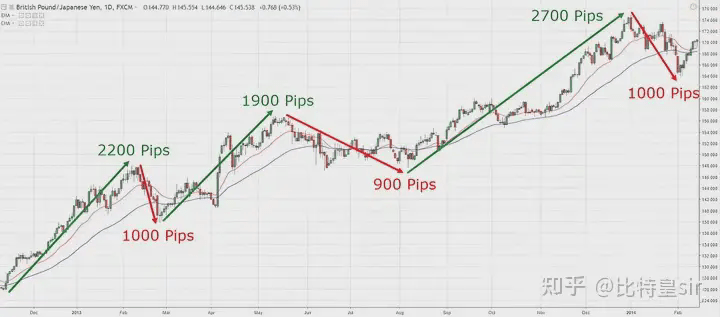
Now you might be thinking: Identifying Trends Seems Simple, but How Do I Enter an Existing Trend?
That is what we're going to discuss next...
How to identify value areas on a chart
You may have heard the saying: 'Buy low, sell high'.
But the question that no one asks is: What is low and what is high?
This is where support and resistance come into play.
Support and Resistance
Here are their definitions:
Support - An area with potential buying pressure that pushes the price up (value area in an uptrend)
Resistance - An area with potential selling pressure that pushes the price down (value area in a downtrend)
This is what I mean...
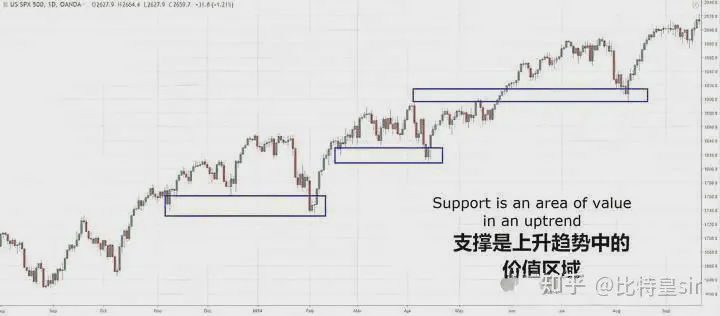
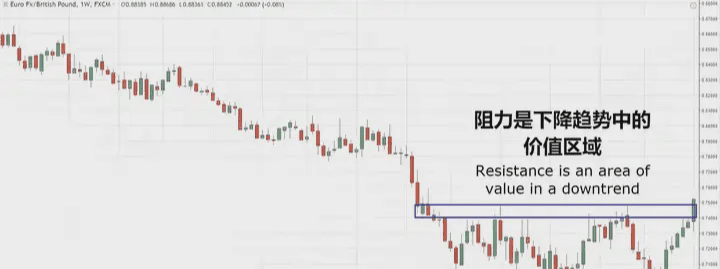
Dynamic Support and Resistance
What you saw earlier is what I call classic support and resistance (horizontal lines).
Or, it can also be in the form of a moving average. This is called dynamic support and resistance (I use the 20 and 50 period exponential moving averages).
This is what I mean...
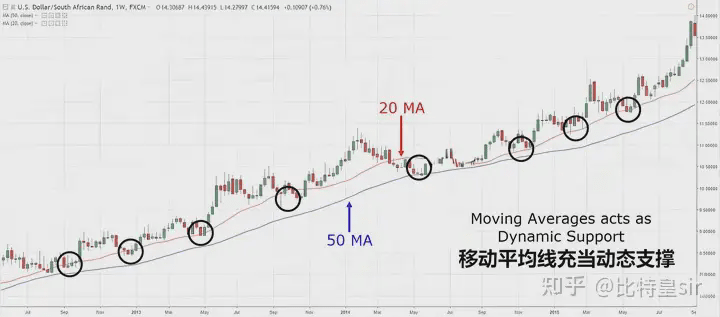
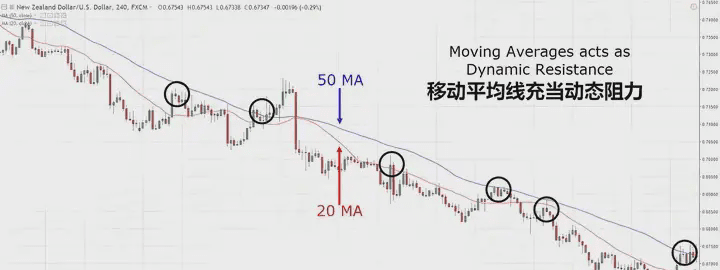
Support and resistance not only allow you to trade from value areas, but also improve your risk-reward ratio and win rate.
Another 'trick' you can use is to use overbought/oversold indicators.
High Probability Trading – Using the Stochastic Indicator to Identify Value Areas
A big mistake most traders make is to short or long just because the price is overbought or oversold.
Because in a strong trending market, the market may remain overbought or oversold (if you trade without a stop-loss, you may lose your entire account).
This is what I mean:
Now you may be thinking: How to use the stochastic indicator to identify value areas?
In an uptrend, you only look for long opportunities when the price is oversold.
In a downtrend, you only look for short opportunities when the price is overbought.
Here are a few examples:
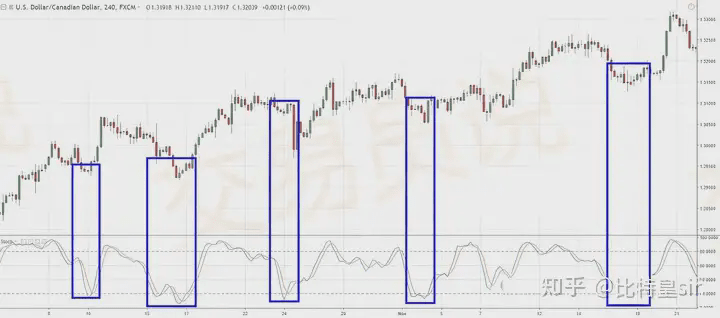
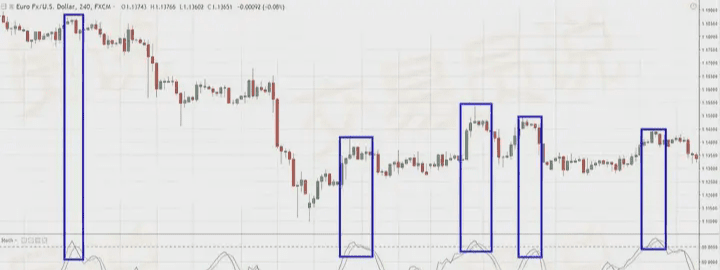
If you follow this simple rule, you can usually “predict” when the pullback ends.
So, you’ve learned how to identify value areas on your charts.
Now, you will learn how to better time your entries.
How to Enter a Trade
There are three ways to enter a trade:
1. Pullback
2. Breakout
3. Failed Test
Pullback
A pullback is when the price temporarily moves against the direction of the underlying trend.
In an uptrend, a pullback is when the price moves downwards.
Advantages of Trading Pullbacks:
◎ You can get a good trading position because you are buying in the value area. This gives you a better risk-reward ratio.
◎ You can better control risk, as the stop-loss location is clearer.
Disadvantages of Trading Pullbacks:
◎ You might miss the move if price doesn’t come into the area you’ve identified.
◎ You might be trading against potential momentum.
Breakout
A breakout is when the price moves outside of an established boundary.
Boundaries can be defined by classic support and resistance.
Up Breakout:
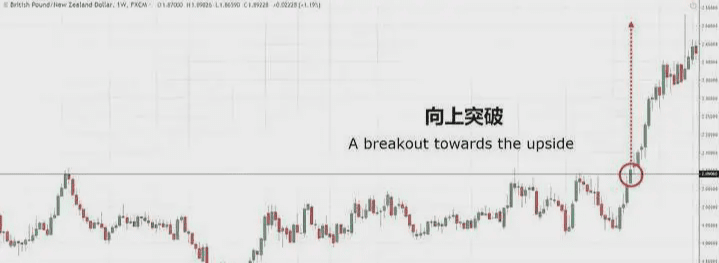
Down Breakout:
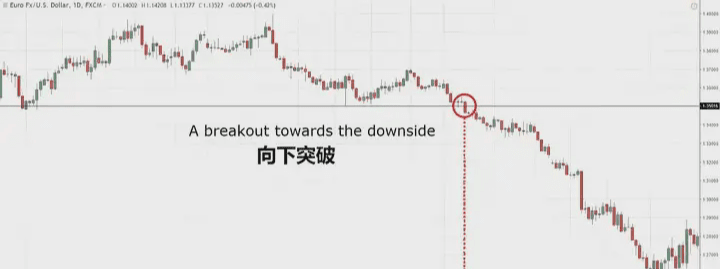
What are the Pros and Cons of Trading the Breakout?
Advantages of trading breakouts:
◎ You’ll always catch the move.
◎ You are trading in line with potential momentum.
Disadvantages of trading breakouts:
◎ Your trading position is poor.
◎ You might encounter a lot of false breakouts.
How to set a stop-loss
I will share two methods with you:
1. Volatility Stop-Loss
2. Structure Stop-Loss
Volatility Stop-Loss
Volatility stop-loss considers market volatility.
A measure of volatility is the Average True Range (ATR), which can help you to set your stop loss.
You need to determine the current ATR value and multiply it by the coefficient you choose. For example, 2ATR, 3ATR, 4ATR, etc.
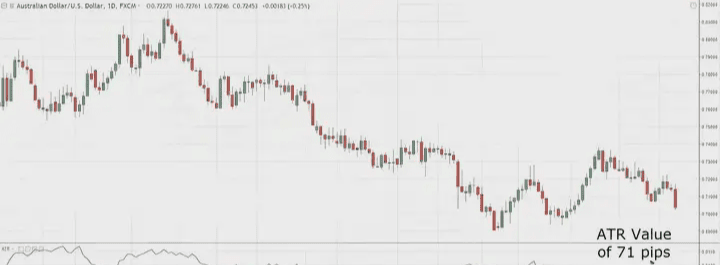
In the example above, the ATR is 71 points.
Thus, if you want to set a stop loss of 2 ATR, you calculate 2 * 71 = 142 pips.
Your stop loss is 142 pips away from your entry.
Advantages:
● Your stop-loss is based on the volatility of the market.
● It is an objective way to define how much 'buffer space' your entry point needs.
Disadvantages:
● It is a lagging indicator because it is based on past prices.
Structure Stop Loss
A structure stop-loss considers the structure of the market and sets the stop-loss accordingly.
For example: Support is an area where the price is likely to rise from. In other words, it is a 'barrier' that prevents the price from falling further.
Thus, it makes sense to set your stop loss below Support. And vice versa for Resistance.
This is what I mean:
You want to set your stop-loss in a place where there is structure in the market, which can act as your 'barrier'.
Advantages:
● You can know exactly when you are wrong because the market structure has been broken.
● You are using the 'barriers' in the market to prevent the price from hitting your stop-loss.
Disadvantages:
● If the market structure is larger, you need a wider stop-loss (which will result in a smaller position size to keep the risk constant).
What is Confluence and How Does it Impact Your Trading
The truth is:
You won't go long just because the stochastic indicator is oversold or the market is in an uptrend.
You need extra 'supporting evidence' to provide you with an entry signal. This 'supporting evidence' is called confluence.
Confluence is when two or more factors give the same trading signal. For example, the market is in an uptrend and the price pulls back to a support area.
Here are two guidelines:
1. No More than Four Confluence Factors
The more confluence factors, the higher the probability of your trade being successful. However, in the real world, your trading strategy should contain 2 to 4 confluence factors.
If it exceeds this amount, you may get very few trading opportunities. Also, it may take a long time for your advantages to come into play.
You can accept moderate levels of trading opportunities and still make money over the long run.
2. Do not have multiple confluence factors in the same category
If you plan to use indicators (oscillators) to identify overbought/oversold areas, then only use one.
Do not add random indicators, RSI, and CCI at the same time, as this can lead to analysis paralysis. Similarly, it makes no sense to add simple moving averages, exponential moving averages, and weighted moving averages to the chart at the same time.
If you're still here, then you'll be rewarded. Because what comes next is the most valuable.
A high probability trading strategy that lets you profit in Bull and Bear markets
This is my secret (which you just learned)...
◎ Trade with the Trend
◎ Trading in Value Areas
◎ Find an Entry Point
◎ Set a stop-loss
◎ Plan Your Exit
If a trade meets these 5 conditions, then it is a good trade for me.
Now, let’s learn a new trading strategy that gives you high probability trading opportunities.
Ready?
● If the 200-day moving average is up and the price is above it, then it is an uptrend (trade with the trend).
● If it is an uptrend, wait for the price to pull back to the support area (trade in the value area).
● If the price pulls back to the support area, wait for a failed test entry (my entry trigger).
● If there is a failed test entry, go long at the opening of the next candlestick (my entry trigger).
● If entering a trade, set the stop-loss below the low of the candlestick and take profit at the recent swing high (my exit and profit target).
The opposite is true for a downtrend.
How to Develop a High-Probability Trading Strategy (A Template You Can Use)
You can “mix and match” the different trading techniques I’ve shared with you earlier.
But ultimately, your trading strategy needs to answer these 7 questions:
In the crypto world, the core secret to achieving financial freedom and earning tens of thousands of U a day: The Ultimate Guide to High-Probability Trading - A complete system from strategy building to practical implementation
You can consider moving averages, trendlines, structure, etc.
2. How do you define value areas?
You can consider dynamic support and resistance, weekly highs/lows, stochastic indicators, etc.
3. How do you enter?
You can consider pullbacks, breakouts, failed tests, moving average crossovers, etc.
4. How do you exit?
There are many ways to exit.
5. How much risk are you willing to take on each trade?
I recommend risking no more than 1% of your account per trade to avoid the risk of bankruptcy.
6. How do you manage the trade?
Will you gradually reduce or increase your position? If so, by how much?
7. What markets will you trade?
Do you focus on one market or multiple markets? If you trade multiple markets, you need to understand the correlation between the markets.
If you can confidently answer these 7 questions, you are on your way to developing your own high-probability trading strategy.
What are some strategies for hoarding coins?
There is a phenomenon in the crypto world that coin traders account for a large proportion, while coin hoarders are few. But in the end, it is often the coin hoarders who can truly profit in the crypto world.
In essence, trading coins is making the difference by buying and selling through short-term trading, while hoarding coins is different. It is to look at the investment value of a certain coin, continue to buy it and wait for appreciation.
Because trading coins has a low barrier to entry, is easy to get started, and is easy to profit in a short period of time, most investors, especially novices, prefer to trade coins rather than hoard coins. Looking at the entire investment market, this is almost the same phenomenon. Short-term trading is the choice of most people.
Once you taste a little sweetness, you become obsessed with trading coins. People are born with this gambler's mentality. They are just a little bit profitable, and they are confident and increase their positions. On the other hand, if they lose a little bit, they are uneasy all day long, and their mentality is on the verge of collapse, falling into a vicious cycle. The final result can only be to cut losses and leave the market.
Hoarding coins requires more skills, a correct judgment and understanding of the market, finding the right time to hoard, and subsequent considerable profits can be made. However, the time from bear market to bull market will be longer, and more patience is required. Today, the instructor will talk about what strategies are available for hoarding coins.
First, the types of coins to hoard should not be too many, try not to exceed six, and try to hoard super mainstream coins that are unlikely to die in three to four years. If it is really difficult to choose or you don't know how to choose, just hoard Bitcoin.
Second, coin hoarding should be moderately diversified. Don't hoard only one type. You can choose three to six types to avoid black swan events.
Third, refer more to the types of coins hoarded by the big players. This has some reference value. Because many of the big players are veterans from 2012 to 2013 and have experience.
Fourth, try to choose fixed investment for hoarding coins. Start fixed investment in the early stage of Bitcoin's long-term low-volume consolidation or arc bottom, and try to avoid the downward trend.
Fifth, have a pessimistic expectation on the mentality of hoarding coins. Hoarding coins in the bear market or the early stage of the bull market is to buy the dip and get trapped, so you should take a long-term view for a good harvest in the bull market two years later. Therefore, try to use spare money that does not affect your life. Even Bitcoin may still fall by 40% to 80%. But as long as you hoard Bitcoin, there will be a day when it rises back.
Sixth, do not use leverage or use very, very little leverage when hoarding coins. The contract leverage of centralized exchanges is full of injustice and inside information. Coin hoarders should not use leverage, as it is easy to be liquidated suddenly. Even if you want to use it, be sure to use spot leverage.

The Three Most Taboo Things for Long-Term Coin Hoarders
1. All-in at once, hoarding coins at too high a price.
For long-term hoarding, a good attitude is very important. If it is not a fixed investment, but a one-time high-level position, no matter how you comfort yourself that it is a long-term investment, before the book loss, the anxious mood is still difficult to dispel.
2. Self-doubt, giving up halfway
During every bear market, very few people enter the market. Even if the value of Bitcoin assets is "halved" or even "quartered", there are far fewer people willing to buy Bitcoin at $3,000 than willing to buy Bitcoin at $10,000. The same is true for fixed investment, which also faces torment. In this case, the biggest problem is not that the market is bearish, but whether the entry is the result of one's own thinking, or whether it is based on hearing about the "success stories" of big players and friends? For long-term investors, it is important to have their own views, execute according to plan, and not be afraid to go against the current. It is also necessary to judge the situation, listen to advice, and add their own understanding to make judgments, and finally verify their understanding through operations.
3. Improper storage and loss of keys.
Many long-term coin hoarders end up forgetting their private keys. Although Bitcoin is valuable now, millions of Bitcoins have already been difficult to recover for various reasons.
The difference between trading coins and hoarding coins is the difference between short-term and long-term stock trading. If you are optimistic about a stock and hold it for a long time, the risk is actually smaller than short-term trading. Holding Bitcoin for a long time is likely to make money. Short-term trading is very risky and can easily lead to complete loss. That's why it is said that 'hoarding coins is better than trading coins'. Trading coins is short-term trading in the secondary market, and hoarding coins is buying spot goods at low prices and selling high in the secondary market.




